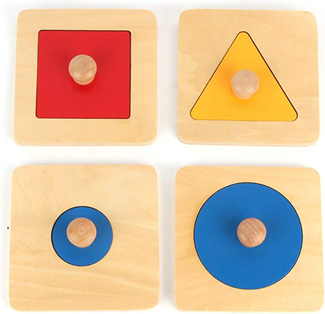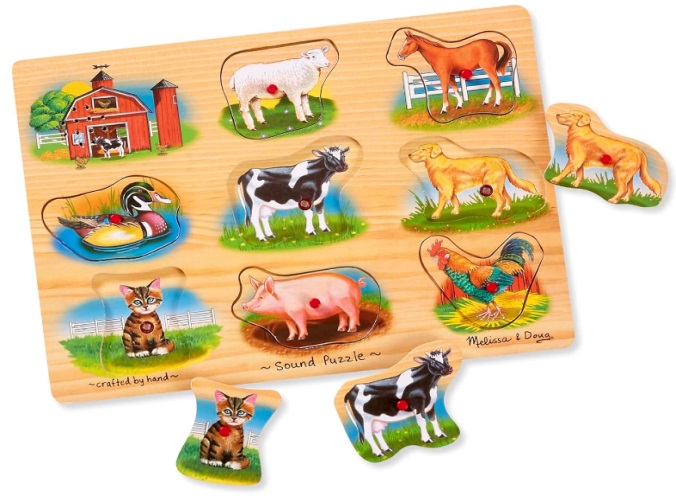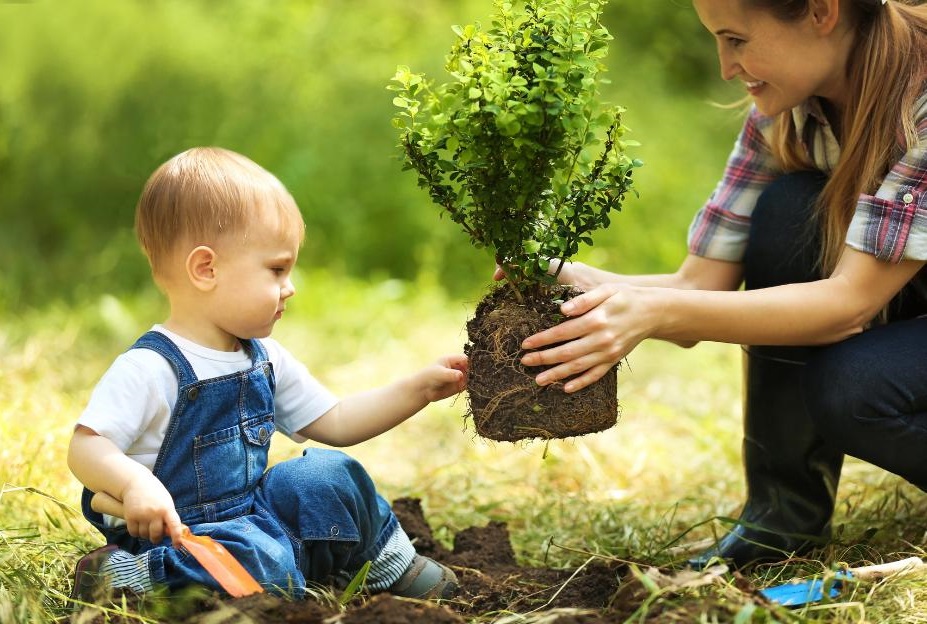Puzzles are often a popular activity with very young children – and for good reason. Not only do they captivate the interests of toddlers and preschoolers, puzzles offer great benefits for cognitive and fine motor development and many are aligned with Montessori.
What makes a puzzle Montessori aligned?
Puzzles are considered aligned with Montessori if they:
- Are simplistic
- Focus on one skill
- Are self correcting, and
- Have a realistic appearance.
Benefits of puzzles
Whether the puzzle has 3 pieces or 500 pieces, the benefits remain. Puzzles foster a child’s cognitive and fine motor development. They promote concentration, coordination, and a sense of order. They facilitate problem-solving skills and encourage the development of spatial awareness. The pincer grasp used to manipulate first puzzles with knobs and pegs is essential to the strengthening and positioning of the hand for the introduction of writing tools. The fine motor control required to successfully complete knobless/pegless and jigsaw puzzles also supports this hand control and muscular development.
Puzzle progression
There is a natural progression that can be followed when introducing puzzles to your young child. It is helpful to start with puzzles with large knobs or handles that allow the child to easily grasp each piece to remove and replace it into the base. As the child’s pincer grasp and fine motor skills develop, the knobs/handles become smaller, making the activity more complex.

1. Egg and cup, ball and cup, cube and box puzzles
These are the very first object fitting puzzles introduced to an infant when they are able to sit unassisted, typically around the age of 8-9 months. The egg and cup is typically introduced first, followed by the ball and cup, and finally, the cube and box is presented to the child. These are very tactile puzzles that are three-dimensional. The child fits two solid shapes into one another. Object permanence boxes are also an example of this type of three-dimensional, tactile puzzle for young children.

2. Knobbed single-shape puzzles
These single-shaped puzzles are developmentally appropriate for children around 9-12 months old. The knobs make it easier for little fingers to grasp. Introduce each of these puzzles in isolation to allow your child to become familiar with the shape. The suggested sequence is: circle, square, triangle. After your child has mastered each of these puzzles when introduced individually, you can introduce 2, then 3, and finally all 4 at one time to increase the difficulty level as they learn and grow.

3. Knobbed three-shape puzzle
Introducing a puzzle with more than one piece on the same base is a natural next step in the progression. When these puzzles include all three shapes, the activity allows for consistency from the single-shape puzzles first introduced. The skill isolation is related to shape. For three-shape puzzles including pieces that are all the same shape of varying sizes, the skill isolation is related to size discrimination. Your child may be ready for these types of puzzles around the age of 12-15 months.

4. More complex knobbed shape puzzles
After the child has mastered three-shape puzzles, more complex knobbed shape puzzles that include more than three shapes could be introduced. These puzzles may include varying sizes of all of the same shape or many different shapes. Your child may be ready for these types of puzzles around the age of 15-18 months.

5. Knobbed realistic puzzles
Knobbed puzzles that are slightly more complex in shape such as one that shows apples, farm animals, or modes of transportation can be introduced next. These puzzles are still a great size for toddlers, have knobs to support the child’s developing pincer grasp, and feature objects that are likely familiar to the child. Try introducing these types of puzzles to your child around 18-24 months.

6. 2-3 piece puzzles
2- and 3-piece puzzles are a great next step in the puzzle progression for children who remain interested. These may be jigsaw puzzles (such as the one linked in the title above) or puzzles with a base. 2- and 3-piece jigsaw puzzles will often allow the child to complete a picture or may encourage them to match related photos such as an adult and child animal or a community helper and the vehicle they drive. 3-piece versions can also help lay the foundation for reading through sequencing. These types of puzzles can be introduced around 24 months.

7. 4-8 piece puzzles
When introducing puzzles with 4 or more pieces, it is a good idea to try to provide some control of error for the child. The puzzle base may have a picture or outline for the child to match and the pieces may be consistent sizes. Your child might be ready for this level of challenge between 2-3 years of age.

8. 8-16 piece puzzles
Transitioning to a puzzle with this number of pieces is usually a pretty big feat for a toddler as it requires much more in-depth problem-solving abilities and trial-and-error. Children typically will not be ready for this level of challenge until 3+ years of age.
If your child is interested in puzzles, the options are limitless. The number of Montessori puzzles is bountiful; from various animals to enhance your child’s study of zoology, to flowers and trees to engage their interest in botany, to continents and biomes to facilitate geographical pursuits – each child is sure to find puzzles they’ll love! You can find some more amazing puzzles in the Puzzle section of our Amazon shop!
Explore the fundamentals of Montessori parenting with this free video by Sylvia Arotin, offering insights and strategies to empower and educate your child.
What if my child doesn’t like puzzles?
It is important to mention that not all young children may be interested in puzzles and that’s ok. Following the child and their interests is a huge part of Montessori; if your child appears disinterested, it is absolutely fine to introduce other materials that appeal to their current interests. However, you may be able to find a puzzle that relates to a current interest your child has such as one that features multiple modes of transportation. This correlation to their interests may encourage them to engage with a puzzle, but if they remain disinterested, there is no need to feel any pressure to have them complete puzzles. There are so many other amazing Montessori materials for them to explore and enjoy that will suit their current interests!






